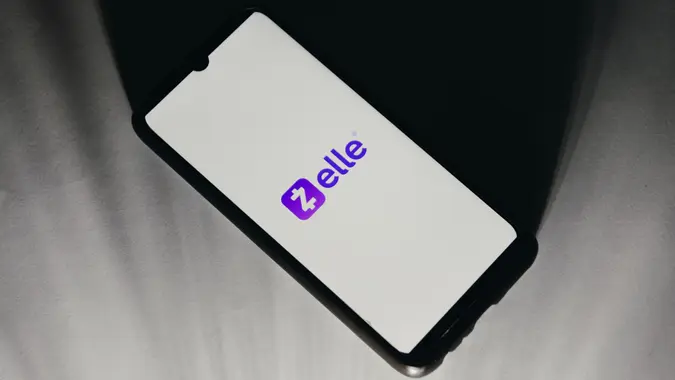What Is a Wire Transfer and How Does It Work?

Commitment to Our Readers
GOBankingRates' editorial team is committed to bringing you unbiased reviews and information. We use data-driven methodologies to evaluate financial products and services - our reviews and ratings are not influenced by advertisers. You can read more about our editorial guidelines and our products and services review methodology.

20 Years
Helping You Live Richer

Reviewed
by Experts

Trusted by
Millions of Readers
A wire transfer is a method for electronically sending money between bank accounts. You can wire money through a bank, credit union or wire transfer service.
The technology dates back to the late 1800s, when Western Union began using its telegraph network to send payment instructions between banks in Boston, Chicago and New York. The technology used to facilitate these transfers has changed over the years, but the process for wiring funds is still similar.
How Wire Transfers Work
The bank you use to send the money first checks that you have enough funds to cover the transfer and any fees. Then, it sends the payment through a network like SWIFT or Fedwire, which delivers the details to the receiving bank.
The recipient receives the money, and the banks settle the transaction. In some cases, the entire process can take just a few hours to complete, but it can take a few days for the funds to clear in some transactions and in countries known as slow to pay.
Types of Wire Transfers
Wire transfers are classified as either international or domestic, according to the location of the sending and receiving banks.
Below is a closer look at the differences between these types of wire transfers.
Domestic Wire Transfers
A domestic wire transfer moves funds between two financial institutions within the same country. Generally, these are processed on the same day. In some cases, a domestic wire may be resolved within a few hours.
Typically, domestic wire transfers cost less and clear more quickly than international wire transfers.
International Wire Transfers
An international wire transfer sends money from one country to another. Although delivery times vary based on the bank, international wires generally clear within two business days.
International wires cost more to send than domestic wires.
Wire Transfer Providers
If you want to send a wire, here’s a look at some of the common providers:
- Financial institutions: Banks and credit unions offer wire transfer services to clients. In many cases, you can initiate a wire transfer through your online account.
- Money transfer services: Companies like Western Union and MoneyGram can initiate wire transfers for you. Typically, you’ll need to head to a physical location for these services.
- Online wire transfer platforms: If you want to handle a wire transfer online, online wire transfer platforms can make your life easier. Some options include PayPal, Wise and Revolut.
Good To Know
While wire transfers are generally safe, there are fraudsters out there working to scam you out of your money. Be cautious and double-check the details before you wire money to anyone — some scammers will even impersonate your loved ones.
How To Receive a Wire Transfer
If you want to receive funds via a wire transfer, use the following steps as a guide:
- Provide correct banking details: You’ll need to share details with the sender. Generally, these include your bank account and routing numbers, their name, mailing address and phone number.
- Ask for tracking numbers: The sender should be able to provide a tracking number. You can use this information to make sure the funds are en route.
- Wait: You can’t do much on your end while you wait. For domestic wires, expect to wait a full business day. For international wires, you might need to wait two full business days to receive the funds.
Wire Transfer Costs and Fees
The cost of sending a wire transfer varies based on the service you use and the type of transfer. Here’s what to keep in mind:
- Bank wire transfer fees: Banks often charge more for international wire transfers than domestic wire transfers. Domestic wires might cost around $35. International wires might cost $50 or more. But the exact costs vary based on the bank you work with.
- Third-party money transfer service fees: If you opt to work with a third party to send your wire, expect to pay between $20 to $35 for domestic wire transfers or $35 to $50 for an international wire transfer.
- Exchange rates: If you are sending or receiving funds internationally, currency exchange fees will take a bite out of your funds. The size of the fee varies based on the bank you work with.
Run the numbers before submitting a wire to confirm you are comfortable with the fees.
Alternatives To Wire Transfers
A wire transfer isn’t the only way to send money. Explore other options below:
- ACH transfers: You can use ACH transfers to send funds that might not be needed immediately. Although these often take more time to reach the recipient, fees are often lower.
- Peer-to-peer transactions: If you are sending funds to a friend, especially small amounts, a P2P platform might work best. Some options include PayPal and Venmo.
- Checks and money orders: A physical check or money order could suit your needs if you can hand over the check to the recipient. But if you mail these documents, it’s possible they’ll get lost along the way.
Final Take
Sending money through a wire transfer is quick and secure — and sometimes the only available option for sending money overseas. It’s also a good choice for paying large invoices or real estate transaction costs when you don’t want to work with cash or paper checks.
Just make sure it’s the right payment method for the transaction and follow all directions provided by the bank to ensure a smooth process.
FAQ
Here are some quick answers to common questions about wire transfers.- What does wire transfer mean?
- A wire transfer is a type of electronic payment that moves funds between bank accounts.
- How long does a wire transfer take?
- A domestic wire transfer often takes one business day. An international wire transfer can take two business days.
- Can I cancel a wire transfer after sending it?
- Generally, you cannot cancel a wire after sending it. But if you suspect fraud, your bank might help you cancel the wire.
- What's the difference between a wire transfer and an ACH transfer?
- A wire transfer sends payments faster than an ACH transfer. Additionally, wire transfers are more expensive than ACH transfers.
- Is wiring money safe?
- Wiring money is generally considered very safe. But if you send funds to a scammer, it can be very difficult to recoup the money.
- How much does a wire transfer cost?
- A wire transfer might cost anywhere from $15 to $50 or more. The exact costs vary based on the service you choose to work with.
- Do wire transfers go through on weekends?
- Generally, wire transfers are processed on business days. With that, wire transfers usually won't work on the weekends.
Allison Hache contributed to the reporting for this article.
Our in-house research team and on-site financial experts work together to create content that’s accurate, impartial, and up to date. We fact-check every single statistic, quote and fact using trusted primary resources to make sure the information we provide is correct. You can learn more about GOBankingRates’ processes and standards in our editorial policy.
- Consumer Financial Protection Bureau. "What is a wire transfer?"
- Corporate Finance Institute. "Wire Transfer."
- Federal Reserve. "Fedwire® Funds Service - Annual Statistics."
 Written by
Written by  Edited by
Edited by 

























